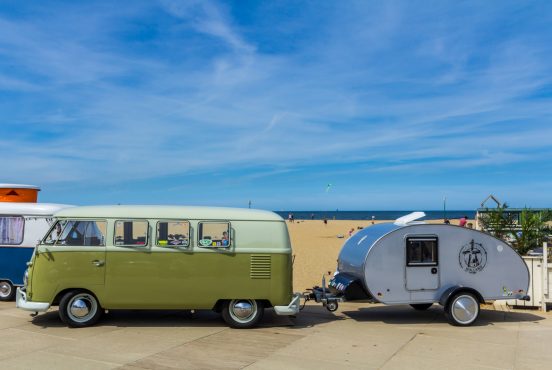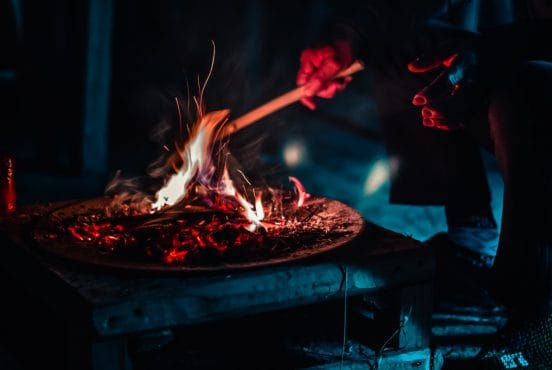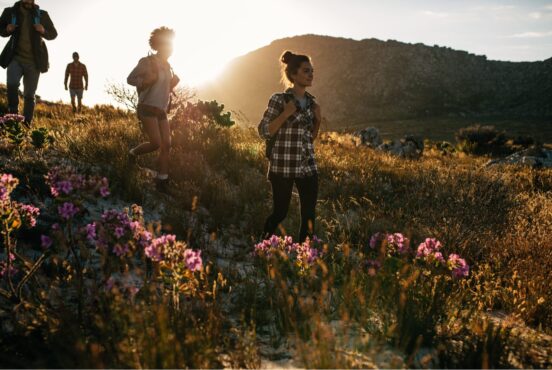We research, test and evaluate outdoor gear based on a number of factors, including our writers’ experience and expertise, trusted user reviews and more. We may earn a commission when you make a purchase through our links. See our editorial policy to learn more.
Backpacking can be expensive, but it doesn’t have to be. Cheap backpacking gear is prevalent throughout outdoor outfitter stores — you just have to know what to look for.
Gone are the days of outlandishly heavy backpacks and bulky water canteens, when only a handful of outdoor brands ruled the store shelves. Now hikers of every ilk have access to lightweight and affordable backpacking gear thanks to a growing competitive market.
The problem is that we are constantly exposed to dramatic advertisements that showcase premium, ultralight outdoor products set upon ridiculously fit hikers who are, somehow, immaculately clean.
I bet they smell good too, and they’d make sure we knew it if smell-o-vision existed.
That’s all well and good, but in reality, most backpackers stink. They’re dirty and tired and their filthy clothes are strewn about all over the campsite on every sun-soaked rock or log in an attempt to dry out the hard-earned sweat.
What we see in promotional materials is not always an accurate representation of reality.
Outdoor brands want us to buy their latest and greatest gear, so they show us what a pristine adventure experience could be like if only we were equipped with the new MountainBasher Weightless Extreme Trowel 9000, or some other piece of high-tech gear. I’m going to trademark that trowel, by the way. It’s my idea!
The reality is that most of the cheap backpacking gear out there is quite good. It may not be as ultralight or as hyper-refined as the top-tier gear, but it’s still pretty useful.
In this article, you’ll find a handful of premium products paired with their inexpensive counterparts and dirt cheap alternatives. The premium products are great if you can afford them, but I’m going to show you that the less expensive options can be just as practical out on the trail.
Read on to see how you can save hundreds of dollars by switching to less expensive backpacking gear.
Related Read: Personal Growth in Nature: A Q&A with OutPass Trekking
Cheap Backpacking Gear Options
Water Bottles

Gold Standard: In my opinion, water bottles are a bit of a gear trap in the outdoor industry. Sure, an indestructible stainless-steel Hydroflask has its uses, but the average backpacker doesn’t have to shell out $40 when all they really need is a basic water bottle. Unless you need something that can withstand boiling water, skip the steel.
Inexpensive Alternative: The Platypus SoftBottle is an inexpensive alternative that is ideal for backpackers. A one-liter SoftBottle is extremely lightweight at a featherlight 1.2 ounces. It packs down to the size of a cigar when void of water, and its soft body molds easily to whatever nook or cranny in your pack you need to shove it into.
Dirt Cheap: You already know where I’m going with this one. If you want the cheapest water bottle option, stick to a basic plastic water bottle, the kind you find on a grocery store shelf. For around a dollar you’ll get a plastic container that’s light as can be and nearly as durable as any expensive “outdoor” water bottle.
The best part of buying a convenience store water bottle is that it comes with free water! I’d recommend Smartwater for the added electrolytes and the versatile bottle shape.
Smartwater bottles are taller and thinner than most other bottles, making them easy to grab from your backpack’s side pockets. The threading on Smartwater bottles also fit perfectly into Sawyer Squeeze and Sawyer Mini water filtration systems.
Water Filtration
Gold Standard: There are plenty of great water filters on the market today that all accomplish the same result of purifying giardia-ridden mountain streams and mud puddles. The MSR Autoflow Gravity Filter is a popular option for backpackers, as are gravity filters in general. They’re easy to use and can filter boatloads of water.
A gravity filter is a fantastic option for someone who is filtering water for a group of people. The cost would add up if each person in your group had their own personal water filter, even when considering the inexpensive options. For an individual backpacker, however, gravity filters are unnecessarily capable and expensive.
Inexpensive Alternative: The best budget water filter on the market is undoubtedly the Sawyer Mini. At a fraction of the weight and price of gravity filters, the Sawyer Mini is an efficient option for solo backpackers.
You won’t easily be able to purify water for an entire group with a Mini, but a solo adventurer won’t have any issue with its filtration capacity. Pair the Sawyer Mini with a Smartwater bottle for an economical and effective water treatment kit.
Dirt Cheap: The dirt cheap options have the downside of, well, literally being dirty — as in, they don’t filter out the dirt and muck from your water. Completely safe, but sort of icky, options include liquid chlorine bleach, iodine, and Aquamira Drops.
Boiling is another alternative, though your time and fuel are costs worth considering. Princeton University has put together an excellent Guide to Water Purification that is worth reading if you insist on going as cheap as possible.
Rain Protection

Gold Standard: Full rain protection requires either a multi-piece setup or a cover-it-all poncho. The Marmot PreCip Rain Jacket and Rain Pants make for a fantastic rain suit that can be complemented by waterproof gloves and a pack cover.
A Sea to Summit Tarp Poncho consolidates some of those full-suit pieces into a less expensive singular piece of gear, but it’s still going to cost you a pretty penny.
Inexpensive Alternative: Frogg Toggs. Say it with me, but shout it this time — Frogg Toggs! You can find Frogg Toggs gear online or in any traditional brick-and-mortar retailer like Walmart or Target. Frogg Toggs ponchos, rain jackets, and rain pants work just about as well as any of the ultralight rain gear sets at REI and weigh just as little.
The downside? Frogg Toggs will shred like tissue paper if you go bushwhacking. Of course, they’re so cheap that you can buy replacement pieces many times over before running up costs anywhere near to what premium rain gear sets would cost you.
Dirt Cheap: You may laugh at this idea, but I’ve seen it in action. Garbage bags. Poke some arm holes and a head hole into the bottom of a black trash bag and you’re all set with a homemade poncho! Compactor bags are a more durable alternative, but they cost a little bit more.
Garbage bags will certainly cause you to sweat, especially if you’re hiking uphill in the rain. They may not be as breathable as a $100 poncho, but they are just as waterproof, and they’re easy to replace.
I’ve seen thru-hikers on the Pacific Crest Trail wearing garbage bags, so this suggestion is more than just a joke. If you’re wary of wearing a trash bag poncho, go for the Frogg Toggs. At the very least, trash bags will make for good pack covers.
Backpacking Clothes
Gold Standard: A plethora of sweat-wicking, UV protecting, antimicrobial outdoor clothing hangs on the racks in every outdoor retailer. Some people swear by merino wool from brands like Smartwool, while others prefer high-tech synthetic clothes like the Columbia Tamiami Shirt or prAna Stretch Zion Pants.
The thing is, nearly all of those fancy specs become irrelevant when you’re out on a weeklong backpacking trip. You’ll sweat enough to overwhelm the sweat-wicking fabric, and you’re going to stink no matter how antimicrobial your shorts claim to be.
Expensive gear may keep you sparkly clean for a short hike, but you’ll never finish a backpacking excursion looking like you just walked off an 18-hole golf course.
Inexpensive Alternative: Any “performance” or “athletic” clothing will work well on a backpacking trip. The key is to avoid fabrics like cotton that soak up moisture and cling to your skin when wet. Nylon, polyester, and wool are your best friends.
Give in to the facts that you will sweat, you will stink, and, in the end, your choice of clothing won’t make much of a difference. What you should hope to avoid is chafing — that’s where athletic clothing reigns supreme over denim jeans and a t-shirt.
Dirt Cheap: Your old gym clothes and swim trunks. Everybody has a stash of workout clothes buried deep in the corner of their closet. There’s no need to buy new clothing. If you really want to go cheap, plan your adventure during Hike Naked Day for the ultimate budget backpacking experience — at least as clothes are concerned.
Additional Read: 9 Best Budget-Friendly Hiking Boots & Shoes for 2021
Backpacking Tent

Gold Standard: Ultralight backpacking tents like the NEMO Hornet offer spacious livability at an extremely light weight. They’re out-of-this-world amazing, but a quality ultralight tent will likely be the most expensive piece of gear in your arsenal.
The price tag is worth the investment if you’ve got the money to spare and you’re going to put in the miles. However, there are competitive alternatives that won’t break the bank.
Inexpensive Alternative: When you add a couple pounds of weight to a tent you can expect the price to drop dramatically. High-quality tents like the REI Co-op Passage and ALPS Mountaineering Zephyr are just as durable, capable, and mountain-worthy as their ultralight competitors — if not more so — but the extra weight tends to scare people off.
Consider your gear as a whole. The entirety of your pack may weigh 15, 25, or 35 pounds depending on your situation. Adding a couple of extra pounds to that total could save you a couple hundred dollars, and you’d likely not even notice the weight difference. Budget-minded folks may find that choosing a slightly heavier tent is worth the compromise.
Dirt Cheap: Ultralight cuben fiber tarps can be just as expensive as a brand new tent, but all-purpose tarps like the Outdoor Products All Purpose Tarp only cost a few bucks. Tarp camping has many benefits as outlined by Hyperlite Mountain Gear, some of which include increased versatility and undeniably lighter weight.
Tarp camping can also be combined with hammock camping, which just like all the other gear categories, can be budget-friendly or expensive depending on your gear choices. If you’re interested in hammock camping, check out our hammock gear resources here.
Depending on your route and the weather you’ll be encountering, cowboy camping is the ultimate form of roughing it. This methods exposes you to the elements more than a covered shelter would, though it may be worth smacking away a few bugs to experience an epic night under a star-filled sky.
More Cheap Backpacking Gear
The creative and crafty among us can concoct some nifty alternatives. I’ve seen some pretty unique homemade gear out on the trail, including “waterproof” shoes outfitted with duct-tape-cuffed plastic shopping bags and a PVC pipe trekking pole. There are many DIY gear guides online to give you some idea of what is possible.
But you don’t have to build your own Fancy Feast camping stove to save a few bucks. There is plenty of cheap backpacking gear to be found at neighborhood yard sales, local REI garage sales, and on Amazon. You can also find killer deals at discount e-tailers. Check out our reviews for websites like: Mountain Steals, Campmor, CampSaver, and Backcountry Edge.
I’d wager that there are a few quick-and-easy backpacking gear options lying about your home right now.
Why buy a titanium camp spoon when the plastic fast food cutlery in your kitchen cabinet will do? Likewise, there is no need to purchase expensive waterproof stuff sacks when you have a drawer full of assorted Ziploc bags in your pantry.
Trekking poles can be swapped out for old ski poles or a sturdy wooden tree branch. Have an old piece of Tyvek in your garage? Cut it to size for the perfect ground tarp.
The point is, your budget backpacking options are only limited by your imagination. Make use of what you have. Purchasing new gear may be required from time to time, but every product is a compromise of price, weight, strength, versatility, and so on.
Know what you need, and know what you don’t before spending big bucks on gear you could have gone without.
Seen in: Backpacking, Gear









